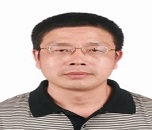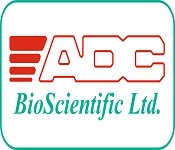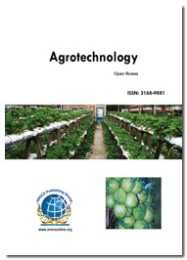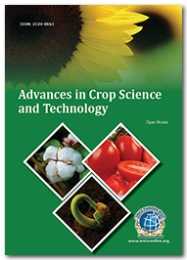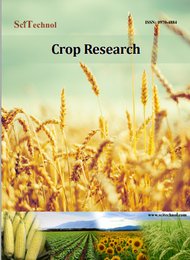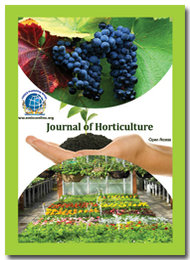Theme: Growing Aspects of Agriculture
Agri World 2017
Conference series LLC invites researchers and practitioners working in a wide variety of scientific areas with agriculture and horticulture to the Agri World 2017, going to be held in beautiful and historic city of Amsterdam, Netherlands. It is one of the leading international conferences for presenting novel and fundamental advances in the field Agriculture and Horticulture, where speakers can present their informative ideas though poster and oral presentations, symposia, workshops and exhibitions. Agri World 2017 is a place to be learn from renowned scholars and scientists across the globe.
Agri World 2017, hosted by Conference series LLC is aimed to target the agriculture related allies like Agro-ecology, Aquatic Resources, Bioenergy, Germplasm Conservation, Plant Interactions, Sustainable Agriculture, Food Engineering, System Engineering, Wildlife and Ecosystem Health, Natural Resources Management, Agricultural research, Plant science, Microbiology research, Environment and ecology , Crop sciences, Floriculture, Greenhouses and horticulture, Fertilisers and chemicals, Irrigation any many more aspects of Agriculture and Horticulture. This conference is the best platform for the sponsors for marketing and promotion of their products and also provides the opportunity to increase their contacts all over the world to take their business to new heights.
Amsterdam is the capital and most populous municipality of the Kingdom of the Netherlands. As the commercial capital of the Netherlands and one of the top financial centres in Europe, Amsterdam is considered an alpha world city by the Globalization and World Cities (GaWC) study group. The city is also the cultural capital of the Netherlands. Amsterdam has an oceanic climate strongly influenced by its proximity to the North Sea to the west, with prevailing westerly winds. Both winters and summers are considered mild, although occasionally quite cool. Amsterdam is one of the most popular tourist destinations in Europe, receiving more than 4.63 million international visitors annually; this is excluding the 16 million day trippers visiting the city every year.
There is a broad spectrum of recreational and cultural sights in Amsterdam that range from fascinating old buildings, the main Amsterdam tourism attractions are museums. The city has over fifty museums which attract many millions of visitors every year. There are Amsterdam tourist attractions you should not miss during your visit, which include Oude Kerk, Dam Square, Begijnhof, Amsterdam's canals, Jordaan, Artis Zoo, Vondelpark, Amsterdam windmills, and many more tourist attractions.
We warmly welcome all the participants to the beautiful city of Amsterdam for the Agri World 2017.
he rearing of animals and cultivation of plants and fungi for food, fiber, biofuels, medicinal plants and many other products that are used to sustain and enhance human life is termed agriculture, or in other words Agriculture is the science or means of farming, including cultivation of the soil for the growing of crops and the rearing of animals to provide food, meat, eggs, wool, milk, and other products." Meanwhile, Agriculture is deep into technology, research, genetics, engineering, raising stock for consumption, mathematics, financial services, computing sciences, chemistry, agronomy, , economics, politics, marketing, sales, ethology and many others. Agriculture is most commonly known as farming, & the growing of crops and rearing of poultry and the other cattle for humans to live a sustainable life.
Earlier Forestry was regarded as a new science. With the rise of disciples like ecology and environmental science, there has been a change or reordering in the applied sciences. In line with this view, forestry is one of three primary land-use sciences and the other two are agriculture and agroforestry. Under these headings, the fundamentals behind the sustainable management of natural forests come by way of natural ecology. Forests or tree plantations, those whose primary work or purpose is the extraction of forest products, are planned and managed utilizing a mix of ecological and agro ecological principles.
The forestry profession includes a wide variety of jobs, with educational requirements ranging from bachelor's degrees to PhDs for highly specialized work. Industrial foresters plan forest regeneration starting with careful harvesting. Urban foresters manage trees in urban green spaces.Foresters develop and implement forest management plans relying on mapped resource inventories showing an area's topographical features as well as its distribution of trees (by species) and other plant cover. Plans also include landowner objectives, roads, culverts, proximity to human habitation, water features and hydrological conditions, and soils information.
Related: Agriculture Conferences | Horticulture Conferences | Agriculture and Horticulture Meetings | Plant Science Conferences | ConferenceSeries Ltd
Conference on Sustainable Agriculture, Environment and Forestry June 28-29, 2017, London, United Kingdom. Conference on Plant Physiology and Pathology June 26-28, 2017 Bangkok, Thailand. Conference on Agriculture and Biological Sciences June 26-29, 2017, Shandong, China. Conference on Postharvest and Quality Management of Horticultural Products April 6-8, 2017, Kandy, Sri Lanka. Conference on Native Ornamental Plants May 1-4, 2017, Ramsar, Iran. Conference on Cactus Pear and Cochineal May 26- 30, 2017, Coquimbo, Chile. Conference on Agriculture Engineering Conference March 28-30, 2017, Osaka, Japan
Related societies:
International Farming System Association, Europe; International Society for Horticultural Science, Belgium; European So ciety for Agronomy, France; United States Agricultural Society, USA; Agricultural & Applied Economics Association, USA; Agricultural History Society, USA. International Wine & Food Society, UK; Union of Food Industry, Bulgaria; Renaissance Agricultural Societies, Germany ; International Crop science Society, USA; American society of Plant Biologists, USA;
Vast number of changes has been observed in global climate over the past century. The nature and causes of these changes have been comprehensively chronicled in a variety of latest reports, such as those by the U.S. Climate Change Science Program and Intergovernmental Panel on Climate Change .The Earth’s climate depends on the functioning of a natural “greenhouse effect.” This effect is the result of heat-trapping gases (also known as greenhouse gases) like water vapour, ozone, carbon dioxide, methane, and nitrous oxide, which absorb the heat radiated from the Earth’s surface and lower atmosphere and then radiate most of the energy back towards the surface. Without this natural greenhouse effect, the surface temperature of the Earth would be about 15.5°C colder. However, increasing activities by humans have been releasing additional heat-trapping gases, intensifying the natural greenhouse effect, thereby changing the Earth’s climate
Global temperatures are markedly rising over this century; by how much and for how long, it depends on a number of factors, which include the amount of heat-trapping gas emissions and how sensitive is the climate to those emissions.
Related: Agriculture Conferences | Horticulture Conferences | Agriculture and Horticulture Meetings | Plant Science Conferences | ConferenceSeries Ltd
Conference on Sustainable Agriculture, Environment and Forestry June 28-29, 2017, London, United Kingdom. Conference on Plant Physiology and Pathology June 26-28, 2017 Bangkok, Thailand. Conference on Agriculture and Biological Sciences June 26-29, 2017, Shandong, China. Conference on Postharvest and Quality Management of Horticultural Products April 6-8, 2017, Kandy, Sri Lanka. Conference on Native Ornamental Plants May 1-4, 2017, Ramsar, Iran. Conference on Cactus Pear and Cochineal May 26- 30, 2017, Coquimbo, Chile. Conference on Agriculture Engineering Conference March 28-30, 2017, Osaka, Japan
Related societies:
International Farming System Association, Europe; International Society for Horticultural Science, Belgium; European Society for Agronomy, France; United States Agricultural Society, USA; Agricultural & Applied Economics Association, USA; Agricultural History Society, USA. International Wine & Food Society, UK; Union of Food Industry, Bulgaria; Renaissance Agricultural Societies, Germany ; International Crop science Society, USA; American society of Plant Biologists, USA;
Agroecology is a study and practice defined in the daily lives of millions of families worldwide. It represents both a form of agricultural production and a process for organization and making community self-determination. Agroecology is a way of life and is one of the paths to end misery and hunger and transform society.
Agroecology brings communities together in the creation of their own solutions to produce healthy food and conserve soil and water. Agroecology is based on communities having access and also control of local resources like land, water and seeds and on working toward local food sovereignty.
Agroecology is a process in which we apply different types of knowledge and ways of knowing that also generates new knowledge. For us Mayan people, this knowledge and these ways of knowing are part of our ancestral memory. For common people, and for peasants, agroecology is a way of life.
Agroecology – the application of ecological concepts and principles to the design and management of sustainable agro-ecosystems.
Related: Agriculture Conferences | Horticulture Conferences | Agriculture and Horticulture Meetings | Plant Science Conferences | ConferenceSeries Ltd
Conference on Sustainable Agriculture, Environment and Forestry June 28-29, 2017, London, United Kingdom. Conference on Plant Physiology and Pathology June 26-28, 2017 Bangkok, Thailand. Conference on Agriculture and Biological Sciences June 26-29, 2017, Shandong, China. Conference on Postharvest and Quality Management of Horticultural Products April 6-8, 2017, Kandy, Sri Lanka. Conference on Native Ornamental Plants May 1-4, 2017, Ramsar, Iran. Conference on Cactus Pear and Cochineal May 26- 30, 2017, Coquimbo, Chile. Conference on Agriculture Engineering Conference March 28-30, 2017, Osaka, Japan
Related societies:
International Farming System Association, Europe; International Society for Horticultural Science, Belgium; European Society for Agronomy, France; United States Agricultural Society, USA; Agricultural & Applied Economics Association, USA; Agricultural History Society, USA. International Wine & Food Society, UK; Union of Food Industry, Bulgaria; Renaissance Agricultural Societies, Germany ; International Crop science Society, USA; American society of Plant Biologists, USA;
Bioenergy refers to products of biomass that have been converted into liquid, solid or gas form, depending on the raw materials and the technology employed, for energy generation. Biomass encompasses a wide spectrum of plant materials ranging from forestry agricultural,and municipal wastes to crops grown specifically to make bio fuels, such as bio ethanol and bio diesel. Solid bio fuels consist of plant matter such as wood chips, and other solid or woody biomass, that can be directly used as fuel, mainly in traditional cook stoves. Two of the most widely used forms are chips of wood (wood chips) and bagasse. Bagasse has been used for decades for electricity generation at sugar mills.A considerable debate exists over the magnitude of direct and indirect GHG emissions from bio fuels; however, the intensive cultivation of energy crops is expected to produce adverse environmental effects on soil and groundwater, and to result in deforestation and loss of biodiversity. Local, national and regional agricultural regulatory frameworks will have to take into account trade-offs between the need for promoting higher yields and the need for environmental and biodiversity conservation.
Related: Agriculture Conferences | Horticulture Conferences | Agriculture and Horticulture Meetings | Plant Science Conferences | ConferenceSeries Ltd
Conference on Sustainable Agriculture, Environment and Forestry June 28-29, 2017, London, United Kingdom. Conference on Plant Physiology and Pathology June 26-28, 2017 Bangkok, Thailand. Conference on Agriculture and Biological Sciences June 26-29, 2017, Shandong, China. Conference on Postharvest and Quality Management of Horticultural Products April 6-8, 2017, Kandy, Sri Lanka. Conference on Native Ornamental Plants May 1-4, 2017, Ramsar, Iran. Conference on Cactus Pear and Cochineal May 26- 30, 2017, Coquimbo, Chile. Conference on Agriculture Engineering Conference March 28-30, 2017, Osaka, Japan.
Related societies:
International Farming System Association, Europe; International Society for Horticultural Science, Belgium; European Society for Agronomy, France; United States Agricultural Society, USA; Agricultural & Applied Economics Association, USA; Agricultural History Society, USA. International Wine & Food Society, UK; Union of Food Industry, Bulgaria; Renaissance Agricultural Societies, Germany ; International Crop science Society, USA; American society of Plant Biologists, USA;
Sustainable agriculture is the practice of the production of food, fiber, or other plant or animal products using farming techniques which are used to protect the environment, public health, human communities, and animal welfare. This form of agriculture is used to produce healthy food without compromising future generations' ability to do the same.Sustainability rests on the principle that we must meet the requirements of the present without compromising the ability of future generations to meet their own requirement. Therefore, stewardship of both natural and human resources is of prime importance. Stewardship of human resources includes consideration of social responsibilities such as working and living conditions of laborers, the needs of rural communities, and consumer health and safety both in the present and the future. Stewardship of land and natural resources involves maintaining or enhancing this vital resource base for the long term. Sustainable agriculture meets economic and social objectives simultaneously. Environmentally sound agriculture is nature-based rather than factory-based. Economic agricultural sustainability depends on profitable enterprises, sound financial planning, proactive marketing, and risk management. Social sustainability results from making decisions with the farm families and the larger community's quality of life as a value and a goal.Sustainable agriculture includes three main goals--environmental health, economic profitability, and social and economic equity. Various numbers of philosophies, policies and practices have contributed to these goals. People in many different fields, from farmers to consumers, have shared this vision and contributed to it. Despite the diverse variety of people and perspectives, the following themes commonly weave through definitions of sustainable agriculture.Sustainable farms produce crops and rear animals without relying on toxic chemical pesticides, synthetic fertilizers, genetically modified seeds, G or practices which degrade soil, water, or other natural resources.
Related: Agriculture Conferences | Horticulture Conferences | Agriculture and Horticulture Meetings | Plant Science Conferences | ConferenceSeries Ltd
Conference on Sustainable Agriculture, Environment and Forestry June 28-29, 2017, London, United Kingdom. Conference on Plant Physiology and Pathology June 26-28, 2017 Bangkok, Thailand. Conference on Agriculture and Biological Sciences June 26-29, 2017, Shandong, China. Conference on Postharvest and Quality Management of Horticultural Products April 6-8, 2017, Kandy, Sri Lanka. Conference on Native Ornamental Plants May 1-4, 2017, Ramsar, Iran. Conference on Cactus Pear and Cochineal May 26- 30, 2017, Coquimbo, Chile. Conference on Agriculture Engineering Conference March 28-30, 2017, Osaka, Japan.
Related societies:
International Farming System Association, Europe; International Society for Horticultural Science, Belgium; European Society for Agronomy, France; United States Agricultural Society, USA; Agricultural & Applied Economics Association, USA; Agricultural History Society, USA. International Wine & Food Society, UK; Union of Food Industry, Bulgaria; Renaissance Agricultural Societies, Germany ; International Crop science Society, USA; American society of Plant Biologists, USA;
Natural Resources Management deals with the sustainable utilization of major natural resources, such as land, water, air, minerals, forests, fisheries, and flora and fauna present on the planet. Together, these resources provide the ecosystem services that are responsible for human life on this planet. While poverty alleviation and sustainable NRM are generally compatible, difficult trade-offs may occur at several times. Nevertheless the fact remains that without poverty alleviation, the environment in developing countries will continue to degrade, and without better NRM, poverty alleviation will be undermined.The natural-resources foundation is coming under increasing pressure from increasing population and higher levels of per-capita economic activity together. During the period 50 years (1990 to 2030) the world’s population is likely to grow by 3.8 billion. 90% of this increase will occur in developing countries. Over the next four decades Sub-Saharan Africa’s population is expected to touch a rise in population from 500 million to 1.4 billion while as Asia’s from 3.1 billion to 5.1 billion, and Latin America from 450 million to 750 million. The distribution of people between rural and urban areas has important implications for the types of stress placed on the environment. In 1990 most people lived in rural areas, but by 2030 the urban population is expected to be twice the size of the rural population. Developing countries and cities, as a group, are expected to grow by 160% over the period, whereas rural populations will grow by only 10%.Integrated natural resource management is a process of managing natural resources in a systematic way, which indulges multiple aspects of natural resource use (biophysical, socio-political, and economic) meet goals regarding production of producers and other direct users (e.g., food security, profitability, risk aversion) as well as goals of the wider community (e.g., poverty alleviation, welfare of future generations, environmental conservation). It focuses on sustainability and at the same time tries to incorporate all possible stakeholders from the planning level itself, reducing possible future conflicts.
Related: Agriculture Conferences | Horticulture Conferences | Agriculture and Horticulture Meetings | Plant Science Conferences | ConferenceSeries Ltd
Conference on Sustainable Agriculture, Environment and Forestry June 28-29, 2017, London, United Kingdom. Conference on Plant Physiology and Pathology June 26-28, 2017 Bangkok, Thailand. Conference on Agriculture and Biological Sciences June 26-29, 2017, Shandong, China. Conference on Postharvest and Quality Management of Horticultural Products April 6-8, 2017, Kandy, Sri Lanka. Conference on Native Ornamental Plants May 1-4, 2017, Ramsar, Iran. Conference on Cactus Pear and Cochineal May 26- 30, 2017, Coquimbo, Chile. Conference on Agriculture Engineering Conference March 28-30, 2017, Osaka, Japan.
Related societies:
International Farming System Association, Europe; International Society for Horticultural Science, Belgium; European Society for Agronomy, France; United States Agricultural Society, USA; Agricultural & Applied Economics Association, USA; Agricultural History Society, USA. International Wine & Food Society, UK; Union of Food Industry, Bulgaria; Renaissance Agricultural Societies, Germany ; International Crop science Society, USA; American society of Plant Biologists, USA;
Plant science is the science of plant life and a branch of biology. The study of plants is vital because they underpin almost all animal life on Earth by generating a large proportion of the oxygen and food that provide humans and other organisms with aerobic respiration with the chemical energy they need to exist. Plants, algae and cyanobacteria are the major groups of organisms that carry out photosynthesis, a process that uses the energy of sunlight to convert water and carbon dioxide[54] into sugars that can be used both as a source of chemical energy and of organic molecules that are used in the structural components of cells. Increasing knowledge of plant anatomy, morphology and life cycles led to the realisation that there were more natural affinities between plants than the artificial sexual system of Linnaeus had indicated. The Candollean system reflected his ideas of the progression of morphological complexity and the later classification by Bentham and Hooker, which was influential until the mid-19th century, was influenced by Candolle's approach. Darwin's publication of the Origin of Species in 1859 and his concept of common descent required modifications to the Candollean system to reflect evolutionary relationships as distinct from mere morphological similarity.Virtually all staple foods come either directly from primary production by plants, or indirectly from animals that eat them. Plants and other photosynthetic organisms are at the base of most food chains because they use the energy from the sun and nutrients from the soil and atmosphere, converting them into a form that can be used by animals. This is what ecologists call the first trophic level. The modern forms of the major staple foods, such as maize, rice, wheat and other cereal grasses, pulses, bananas and plantains, as well as flax and cotton grown for their fibres, are the outcome of prehistoric selection over thousands of years from among wild ancestral plants with the most desirable characteristics.
Related: Agriculture Conferences | Horticulture Conferences | Agriculture and Horticulture Meetings | Plant Science Conferences | ConferenceSeries Ltd
Conference on Sustainable Agriculture, Environment and Forestry June 28-29, 2017, London, United Kingdom. Conference on Plant Physiology and Pathology June 26-28, 2017 Bangkok, Thailand. Conference on Agriculture and Biological Sciences June 26-29, 2017, Shandong, China. Conference on Postharvest and Quality Management of Horticultural Products April 6-8, 2017, Kandy, Sri Lanka. Conference on Native Ornamental Plants May 1-4, 2017, Ramsar, Iran. Conference on Cactus Pear and Cochineal May 26- 30, 2017, Coquimbo, Chile. Conference on Agriculture Engineering Conference March 28-30, 2017, Osaka, Japan.
Related societies:
International Farming System Association, Europe; International Society for Horticultural Science, Belgium; European Society for Agronomy, France; United States Agricultural Society, USA; Agricultural & Applied Economics Association, USA; Agricultural History Society, USA. International Wine & Food Society, UK; Union of Food Industry, Bulgaria; Renaissance Agricultural Societies, Germany ; International Crop science Society, USA; American society of Plant Biologists, USA;
Crop science is a highly integrative science using the disciplines of conventional plant breeding, transgenic crop improvement plant physiology, and cropping system sciences to develop improved varieties of agronomic, turf, and forage crops to produce feed, food, fuel, and fiber for our world’s growing population. During the last century, crop science has achieved feats that are now part of everyday life and taken for granted.The role of crop plants as feedstock for biofuel production will increase in the coming years. Crops are a source of sugar, starch, and cellulose that can be converted to ethanol and seed oil that can be converted to biodiesel. All bioenergy crops will need to be grown in a way that optimizes biomass yield while minimizing inputs of fertilizer, irrigation, and pesticides.It is important to minimize the competition between biofuel crops and human food crops. Therefore, in the future, ethanol-based biofuel crops probably will be non-food crops grown on land that is marginal for other crop production. Since biodiesel is the product of seed oil, this biofuel must be produced using existing seed crops. Therefore biodiesel research needs to concentrate on oil seed crops that are less used for feedstock but very productive, such as peanut. The composition of biofuel crops will need to be modified to make them easy to convert for energy use, but these modifications may make them more vulnerable to stresses and pests.
Related: Agriculture Conferences | Horticulture Conferences | Agriculture and Horticulture Meetings | Plant Science Conferences | ConferenceSeries Ltd
Conference on Sustainable Agriculture, Environment and Forestry June 28-29, 2017, London, United Kingdom. Conference on Plant Physiology and Pathology June 26-28, 2017 Bangkok, Thailand. Conference on Agriculture and Biological Sciences June 26-29, 2017, Shandong, China. Conference on Postharvest and Quality Management of Horticultural Products April 6-8, 2017, Kandy, Sri Lanka. Conference on Native Ornamental Plants May 1-4, 2017, Ramsar, Iran. Conference on Cactus Pear and Cochineal May 26- 30, 2017, Coquimbo, Chile. Conference on Agriculture Engineering Conference March 28-30, 2017, Osaka, Japan.
Related societies:
International Farming System Association, Europe; International Society for Horticultural Science, Belgium; European Society for Agronomy, France; United States Agricultural Society, USA; Agricultural & Applied Economics Association, USA; Agricultural History Society, USA. International Wine & Food Society, UK; Union of Food Industry, Bulgaria; Renaissance Agricultural Societies, Germany ; International Crop science Society, USA; American society of Plant Biologists, USA;
A greenhouse is a structure with walls and roof made chiefly of transparent material, such as glass, in which plants requiring regulated climatic conditions are grown. These structures range in size from small sheds to industrial-sized buildings. A miniature greenhouse is known as a cold frame. The interior of a greenhouse exposed to sunlight becomes significantly warmer than the external ambient temperature, protecting its contents in cold weather. The explanation given in most sources for the warmer temperature in a greenhouse is that incident solar radiation passes through the glass roof and walls and is absorbed by the floor, earth, and contents, which become warmer and re-emit the energy as longer-wavelength infrared radiation. The primary crops grown in greenhouses include: pepper, tomato, cucumber, lettuce, herbs, and strawberry. The industry in Florida has changed from primarily either tomato or cucumber in the early 1990s to the diversity of today. A variety of structure types are used, as well. Structures include both fan and pad or naturally ventilated systems. Several hydroponic production systems are also used, including soilless bag culture, Rockwool, upright pots, beto buckets, nutrient film technique, floating systems, vertical stacking pots, troughs, gravel culture, and others. The production of high quality hydroponic vegetables is also an intensive time commitment. Small farmers use direct marketing methods to sell their crops by selling retail at the farm, at farmers markets, roadside stands, other small produce stores, grocery chains, or other wholesale outlets.Horticulture is the branch of agriculture that deals with the art, science, technology, and business of growing plants. It includes the cultivation of medicinal plants, fruits, vegetables, nuts, seeds, herbs, sprouts, mushrooms, algae, flowers, seaweeds and non-food crops such as grass and ornamental trees and plants. Horticulturists apply their knowledge, skills, and technologies used to grow intensively produced plants for human food and non-food uses and for personal or social need.Greenhouse Horticulture is a unique agro-system and is an important economic, It is the only production method that can significantly control abiotic and biotic factors. The advances in this field are due to a steady flow of innovative technological approaches. In this way, for example, detailed investigations of the regulation of organ formation can be directly related to improved control techniques in production situations. The study of the economics of plant production systems and marketing also contributes to the success of the sector.
Related: Agriculture Conferences | Horticulture Conferences | Agriculture and Horticulture Meetings | Plant Science Conferences | ConferenceSeries Ltd
Conference on Sustainable Agriculture, Environment and Forestry June 28-29, 2017, London, United Kingdom. Conference on Plant Physiology and Pathology June 26-28, 2017 Bangkok, Thailand. Conference on Agriculture and Biological Sciences June 26-29, 2017, Shandong, China. Conference on Postharvest and Quality Management of Horticultural Products April 6-8, 2017, Kandy, Sri Lanka. Conference on Native Ornamental Plants May 1-4, 2017, Ramsar, Iran. Conference on Cactus Pear and Cochineal May 26- 30, 2017, Coquimbo, Chile. Conference on Agriculture Engineering Conference March 28-30, 2017, Osaka, Japan.
Related societies:
International Farming System Association, Europe; International Society for Horticultural Science, Belgium; European Society for Agronomy, France; United States Agricultural Society, USA; Agricultural & Applied Economics Association, USA; Agricultural History Society, USA. International Wine & Food Society, UK; Union of Food Industry, Bulgaria; Renaissance Agricultural Societies, Germany ; International Crop science Society, USA; American society of Plant Biologists, USA;
Fertilizers are chemical compounds applied to promote plant growth. Typically, fertilizers are applied either to the soil or by foliar feeding. Fertilizers can be placed into the categories of organic and inorganic fertilizers. Organic fertilizers are naturally occurring compounds manufactured through natural processes. Inorganic fertilizers are manufactured through chemical processes using naturally occurring deposits, while chemically altering them. Synthetic fertilizers, such as urea and urea formaldehyde, are considered organic in the sense of the organic chemistry, and can be supplied organically. Naturally mined powdered limestone, mined rock phosphate and sodium nitrate, are inorganic. Many inorganic fertilizers do not replace trace mineral elements in the soil which become gradually depleted by crops. High application rates of nitrogen fertilizers in order to maximize crop yields, combined with the high solubilities of these fertilizers can lead to increased leaching of nitrates into groundwater. Nitrogen containing inorganic fertilizers in the form of nitrate and ammonium also cause soil acidification. Storage and application of some nitrogen fertilizers in some weather or soil conditions can cause emissions of the greenhouse gas nitrous oxide (N2O). Ammonia gas (NH3) may be emitted following application of manure/slurry. Over-fertilization of a vital nutrient can be as detrimental as under fertilization.Toxic fertilizers are recycled industrial waste that introduces several classes of toxic materials into farm land, garden soils, and water streams.Soils naturally contain many nutrients like nitrogen, phosphorous, calcium, and potassium. These nutrients allow plants to grow. When soil nutrients are missing or in short supply, plants suffer from nutrient deficiency and stop growing. When the nutrient level is too low, the plant cannot function properly and produce the food necessary to feed the worlds’ population.
Related: Agriculture Conferences | Horticulture Conferences | Agriculture and Horticulture Meetings | Plant Science Conferences | ConferenceSeries Ltd
Conference on Sustainable Agriculture, Environment and Forestry June 28-29, 2017, London, United Kingdom. Conference on Plant Physiology and Pathology June 26-28, 2017 Bangkok, Thailand. Conference on Agriculture and Biological Sciences June 26-29, 2017, Shandong, China. Conference on Postharvest and Quality Management of Horticultural Products April 6-8, 2017, Kandy, Sri Lanka. Conference on Native Ornamental Plants May 1-4, 2017, Ramsar, Iran. Conference on Cactus Pear and Cochineal May 26- 30, 2017, Coquimbo, Chile. Conference on Agriculture Engineering Conference March 28-30, 2017, Osaka, Japan.
Related societies:
International Farming System Association, Europe; International Society for Horticultural Science, Belgium; European Society for Agronomy, France; United States Agricultural Society, USA; Agricultural & Applied Economics Association, USA; Agricultural History Society, USA. International Wine & Food Society, UK; Union of Food Industry, Bulgaria; Renaissance Agricultural Societies, Germany ; International Crop science Society, USA; American society of Plant Biologists, USA;
Poultry farming is the raising of domesticated birds such as chickens, ducks, turkeys and geese for the purpose of farming meat or eggs for food. According to the researchers and scientists, 74% of the world’s poultry meat, and 68 percent of eggs are produced in ways that are described as ‘intensive'. Free-range poultry farming allows chickens to roam freely for a period of the day, although they are usually confined in sheds at night to protect them from predators or kept indoors if the weather is particularly bad. Commercial hens usually begin laying eggs at 16–20 weeks of age, although production gradually declines soon after from approximately 25 weeks of age. Environmental conditions are often automatically controlled in egg-laying systems. For example, the duration of the light phase is initially increased to prompt the beginning of egg-laying at 16–20 weeks of age and then mimics summer day length which stimulates the hens to continue laying eggs all year round; normally, egg production occurs only in the warmer months. Some commercial breeds of hen can produce over 300 eggs a year. Suitable land requires adequate drainage to minimise worms and coccidial oocysts, suitable protection from prevailing winds, good ventilation, access and protection from predators. In organic egg-laying systems, chickens are also free-range. Organic systems are based upon restrictions on the routine use of synthetic yolk colourants, in-feed or in-water medications, other food additives and synthetic amino acids, and a lower stocking density and smaller group sizes. Modern egg laying breeds often suffer from osteoporosis which results in the chicken's skeletal system being weakened. During egg production, large amounts of calcium are transferred from bones to create egg-shell. Although dietary calcium levels are adequate, absorption of dietary calcium is not always sufficient, given the intensity of production, to fully replenish bone calcium. This can lead to increases in bone breakages, particularly when the hens are being removed from cages at the end of laying.Meat chickens, commonly called broilers, are floor-raised on litter such as wood shavings, peanut shells, and rice hulls, indoors in climate-controlled housing. Under modern farming methods, meat chickens reared indoors reach slaughter weight at 5 to 9 weeks of age. Broilers are not raised in cages. They are raised in large, open structures known as grow out houses. Keeping birds inside a house protects them from predators such as hawks and foxes.
Related: Agriculture Conferences | Horticulture Conferences | Agriculture and Horticulture Meetings | Plant Science Conferences | ConferenceSeries Ltd
Conference on Sustainable Agriculture, Environment and Forestry June 28-29, 2017, London, United Kingdom. Conference on Plant Physiology and Pathology June 26-28, 2017 Bangkok, Thailand. Conference on Agriculture and Biological Sciences June 26-29, 2017, Shandong, China. Conference on Postharvest and Quality Management of Horticultural Products April 6-8, 2017, Kandy, Sri Lanka. Conference on Native Ornamental Plants May 1-4, 2017, Ramsar, Iran. Conference on Cactus Pear and Cochineal May 26- 30, 2017, Coquimbo, Chile. Conference on Agriculture Engineering Conference March 28-30, 2017, Osaka, Japan.
Related societies:
International Farming System Association, Europe; International Society for Horticultural Science, Belgium; European Society for Agronomy, France; United States Agricultural Society, USA; Agricultural & Applied Economics Association, USA; Agricultural History Society, USA. International Wine & Food Society, UK; Union of Food Industry, Bulgaria; Renaissance Agricultural Societies, Germany ; International Crop science Society, USA; American society of Plant Biologists, USA;
Organic farming is an alternative agricultural system which originated early in the 20th Century in reaction to rapidly changing farming practices. Organic agricultural methods are internationally regulated and legally enforced by many nations, based in large part on the standards set by the International Federation of Organic Agriculture Movements. An organic farm, properly speaking, is not one that uses certain methods and substances and avoids others; it is a farm whose structure is formed in imitation of the structure of a natural system that has the integrity, the independence and the benign dependence of an organism. Organic farming methods combine scientific knowledge of ecology and modern technology with traditional farming practices based on naturally occurring biological processes. Organic farming methods are studied in the field of agro ecology. The principal methods of organic farming include crop rotation, green manures and compost, biological pest control, and mechanical cultivation. These measures use the natural environment to enhance agricultural productivity: legumes are planted to fix nitrogen into the soil, natural insect predators are encouraged, crops are rotated to confuse pests and renew soil, and natural materials such as potassium bicarbonate and mulches are used to control disease and weeds. Genetically modified seeds and animals are excluded. organic is fundamentally different from conventional because of the use of carbon based fertilizers compared with highly soluble synthetic based fertilizers and biological pest control instead of synthetic pesticides. Organic agriculture farming and large-scale conventional farming are not entirely mutually exclusive. Many of the methods developed for organic agriculture have been borrowed by more conventional agriculture. For example, Integrated Pest Management is a multifaceted strategy that uses various organic methods of pest control whenever possible, but in conventional farming could include synthetic pesticides only as a last resort. Organic farming encourages Crop diversity. Plants need nitrogen, phosphorus, and potassium, as well as micronutrients and symbiotic relationships with fungi and other organisms to flourish, but getting enough nitrogen, and particularly synchronization so that plants get enough nitrogen at the right time (when plants need it most), is a challenge for organic farmers.[38] Crop rotation and green manure ("cover crops") help to provide nitrogen through legumes, which fix nitrogen from the atmosphere through symbiosis with rhizobial bacteria. Intercropping, which is sometimes used for insect and disease control, can also increase soil nutrients, but the competition between the legume and the crop can be problematic and wider spacing between crop rows is required. Crop residues can be ploughed back into the soil, and different plants leave different amounts of nitrogen, potentially aiding synchronization. Organic farmers also use animal manure, certain processed fertilizers such as seed meal and various mineral powders such as rock phosphate and green sand, a naturally occurring form of potash that provides potassium.
Related: Agriculture Conferences | Horticulture Conferences | Agriculture and Horticulture Meetings | Plant Science Conferences | ConferenceSeries Ltd
Conference on Sustainable Agriculture, Environment and Forestry June 28-29, 2017, London, United Kingdom. Conference on Plant Physiology and Pathology June 26-28, 2017 Bangkok, Thailand. Conference on Agriculture and Biological Sciences June 26-29, 2017, Shandong, China. Conference on Postharvest and Quality Management of Horticultural Products April 6-8, 2017, Kandy, Sri Lanka. Conference on Native Ornamental Plants May 1-4, 2017, Ramsar, Iran. Conference on Cactus Pear and Cochineal May 26- 30, 2017, Coquimbo, Chile. Conference on Agriculture Engineering Conference March 28-30, 2017, Osaka, Japan.
Related societies:
International Farming System Association, Europe; International Society for Horticultural Science, Belgium; European Society for Agronomy, France; United States Agricultural Society, USA; Agricultural & Applied Economics Association, USA; Agricultural History Society, USA. International Wine & Food Society, UK; Union of Food Industry, Bulgaria; Renaissance Agricultural Societies, Germany ; International Crop science Society, USA; American society of Plant Biologists, USA;
Agricultural extension is the application of scientific research and new knowledge to agricultural practices through farmer education. The field of 'extension' now encompasses a wider range of communication and learning activities organized for rural people by educators from different disciplines, including agriculture, agricultural marketing, health, and business studies. Agricultural extension agencies in developing countries receive large amounts of support from international development organizations such as the World Bank and the Food and Agriculture Organization of the United Nations. The field of 'extension' deals with communication and learning activities organized for rural farmers to expose them to proper knowledge about profitable and sustainable farming system. Extension practitioners can be found throughout the world, usually working for government agencies. They are represented by several professional organizations, networks and extension journals.
Related: Agriculture Conferences | Horticulture Conferences | Agriculture and Horticulture Meetings | Plant Science Conferences | ConferenceSeries Ltd
Conference on Sustainable Agriculture, Environment and Forestry June 28-29, 2017, London, United Kingdom. Conference on Plant Physiology and Pathology June 26-28, 2017 Bangkok, Thailand. Conference on Agriculture and Biological Sciences June 26-29, 2017, Shandong, China. Conference on Postharvest and Quality Management of Horticultural Products April 6-8, 2017, Kandy, Sri Lanka. Conference on Native Ornamental Plants May 1-4, 2017, Ramsar, Iran. Conference on Cactus Pear and Cochineal May 26- 30, 2017, Coquimbo, Chile. Conference on Agriculture Engineering Conference March 28-30, 2017, Osaka, Japan.
Related societies:
International Farming System Association, Europe; International Society for Horticultural Science, Belgium; European Society for Agronomy, France; United States Agricultural Society, USA; Agricultural & Applied Economics Association, USA; Agricultural History Society, USA. International Wine & Food Society, UK; Union of Food Industry, Bulgaria; Renaissance Agricultural Societies, Germany ; International Crop science Society, USA; American society of Plant Biologists, USA;
Agricultural Education is the teaching of agriculture, natural resources, and land management through hands on experience and guidance to prepare students for entry level jobs or to further education to prepare them for advanced agricultural jobs. Classes that may be taught in an agricultural education curriculum include horticulture, land management, turf grass management, agricultural science, small animal care, machine and shop classes, health and nutrition, livestock management, biology courses, etc. Agricultural education can be taught at the elementary level, middle school level, secondary, post-secondary and adult levels.[1] Elementary agriculture is taught in public schools and private schools, and deals with such subjects as how plants and animals grow and how soil is farmed and conserved. Vocational agriculture trains people for jobs in such areas as production, marketing, and conservation Agricultural education is taught on the college level as well. Degrees in agricultural education can be used to teach agriculture or obtain a job in an agricultural related work field. This degree can give students the qualifications and knowledge necessary to teach agricultural classes such as the courses offered at the high school level. Students will be required to Each land-grant university has an agricultural experiment station equipped with laboratories and experimental farms. There, agricultural scientists work to develop better farming methods, solve the special problems of local farmers, and provide new technology. Research published in scholarly journals about agricultural safety is available from the NIOSH-supported National Agricultural Safety Database. Complete agriculture classes as well as education classes in order to become qualified to teach.
Related: Agriculture Conferences | Horticulture Conferences | Agriculture and Horticulture Meetings | Plant Science Conferences | ConferenceSeries Ltd
Conference on Sustainable Agriculture, Environment and Forestry June 28-29, 2017, London, United Kingdom. Conference on Plant Physiology and Pathology June 26-28, 2017 Bangkok, Thailand. Conference on Agriculture and Biological Sciences June 26-29, 2017, Shandong, China. Conference on Postharvest and Quality Management of Horticultural Products April 6-8, 2017, Kandy, Sri Lanka. Conference on Native Ornamental Plants May 1-4, 2017, Ramsar, Iran. Conference on Cactus Pear and Cochineal May 26- 30, 2017, Coquimbo, Chile. Conference on Agriculture Engineering Conference March 28-30, 2017, Osaka, Japan.
Related societies:
International Farming System Association, Europe; International Society for Horticultural Science, Belgium; European Society for Agronomy, France; United States Agricultural Society, USA; Agricultural & Applied Economics Association, USA; Agricultural History Society, USA. International Wine & Food Society, UK; Union of Food Industry, Bulgaria; Renaissance Agricultural Societies, Germany ; International Crop science Society, USA; American society of Plant Biologists, USA;
Irrigation is the artificial exploitation and distribution of water at project level aiming at application of water at field level to agricultural crops in dry areas or in periods of scarce rainfall to assure or improve crop production. The most important physical elements of an irrigation project are land and water. The enterprise type of water management occurred under large landowners or agricultural corporations, but also in centrally controlled societies. Both the land and water resources are in one hand. The utility type of water management occurs in areas where the land is owned by many, but the exploitation and distribution of the water resources are managed by (government) organizations. The exploitation of water resources via large storage dams - that often provided electric power as well - and diversion weirs normally remained the responsibility of the government, mainly because environmental protection and safety issues were at stake. Irrigation systems are also used for dust suppression, disposal of sewage, and in mining. Irrigation is often studied together with drainage, which is the natural or artificial removal of surface and sub-surface water from a given area. Various types of irrigation techniques differ in how the water obtained from the source is distributed within the field. In general, the goal is to supply the entire field uniformly with water, so that each plant has the amount of water it needs, neither too much nor too little.
Related: Agriculture Conferences | Horticulture Conferences | Agriculture and Horticulture Meetings | Plant Science Conferences | ConferenceSeries Ltd
Conference on Sustainable Agriculture, Environment and Forestry June 28-29, 2017, London, United Kingdom. Conference on Plant Physiology and Pathology June 26-28, 2017 Bangkok, Thailand. Conference on Agriculture and Biological Sciences June 26-29, 2017, Shandong, China. Conference on Postharvest and Quality Management of Horticultural Products April 6-8, 2017, Kandy, Sri Lanka. Conference on Native Ornamental Plants May 1-4, 2017, Ramsar, Iran. Conference on Cactus Pear and Cochineal May 26- 30, 2017, Coquimbo, Chile. Conference on Agriculture Engineering Conference March 28-30, 2017, Osaka, Japan.
Related societies:
International Farming System Association, Europe; International Society for Horticultural Science, Belgium; European Society for Agronomy, France; United States Agricultural Society, USA; Agricultural & Applied Economics Association, USA; Agricultural History Society, USA. International Wine & Food Society, UK; Union of Food Industry, Bulgaria; Renaissance Agricultural Societies, Germany ; International Crop science Society, USA; American society of Plant Biologists, USA;
Germplasm collections are a wonderful treasure trove of genetic diversity and the foundation for all crop improvement programs. A collection for a single crop species may contain more than 50,000 distinct genetic plant types, yet the genomic profiles are not readily available, limiting application of information contained in the collections. However, new inexpensive technologies offer a low-cost remedy for developing detailed genetic profiles to entire collections. As a result, new genomics information will enhance our ability to correlate a plant’s genotype with its agricultural performance for plant breeding purposes in a way never before possible. Germplasm is the living genetic resources such as seeds or tissue that is maintained for the purpose of animal and plant breeding, preservation, and other research uses. These resources may take the form of seed collections stored in seed banks, trees growing in nurseries, animal breeding lines maintained in animal breeding programs or gene banks, etc.Germplasm is the living genetic resources such as seeds or tissue that is maintained for the purpose of animal and plant breeding, preservation, and other research uses. These resources may take the form of seed collections stored in seed banks, trees growing in nurseries, animal breeding lines maintained in animal breeding programs or gene banks, etc.Germplasm provides the raw material for the breeder to develop various crops. Thus, conservation of assumes significance in all breeding programmes.The very objective of conservation (or storage) is to preserve the genetic diversity of a particular plant or genetic stock for its use at any time in future. In recent years, many new plant species with desired and improved characteristics have started replacing the primitive and conventionally used agricultural plants. It is important to conserve the endangered plants or else some of the valuable genetic traits present in the primitive plants may be lost.Usually, seeds are the most common and convenient materials to conserve plant . This is because many plants are propagated through seeds, and seeds occupy relatively small space. Further, seeds can be easily transported to various places.
Related: Agriculture Conferences | Horticulture Conferences | Agriculture and Horticulture Meetings | Plant Science Conferences | ConferenceSeries Ltd
Conference on Sustainable Agriculture, Environment and Forestry June 28-29, 2017, London, United Kingdom. Conference on Plant Physiology and Pathology June 26-28, 2017 Bangkok, Thailand. Conference on Agriculture and Biological Sciences June 26-29, 2017, Shandong, China. Conference on Postharvest and Quality Management of Horticultural Products April 6-8, 2017, Kandy, Sri Lanka. Conference on Native Ornamental Plants May 1-4, 2017, Ramsar, Iran. Conference on Cactus Pear and Cochineal May 26- 30, 2017, Coquimbo, Chile. Conference on Agriculture Engineering Conference March 28-30, 2017, Osaka, Japan.
Related societies:
International Farming System Association, Europe; International Society for Horticultural Science, Belgium; European Society for Agronomy, France; United States Agricultural Society, USA; Agricultural & Applied Economics Association, USA; Agricultural History Society, USA. International Wine & Food Society, UK; Union of Food Industry, Bulgaria; Renaissance Agricultural Societies, Germany ; International Crop science Society, USA; American society of Plant Biologists, USA;
Aquaculture, also known as aqua farming, is the farming of aquatic organisms such as fish, crustaceans, molluscs and aquatic plants, involves cultivating freshwater and saltwater populations under controlled conditions, and can be contrasted with commercial fishing, which is the harvesting of wild fish.[4] Broadly speaking, the relation of aquaculture to finfish and shellfish fisheries is analogous to the relation of agriculture to hunting and gathering. Particular kinds of aquaculture include fish farming, shrimp farming, oyster farming, mariculture, algaculture (such as seaweed farming), and the cultivation of ornamental fish. The farming of fish is the most common form of aquaculture. It involves raising fish commercially in tanks, ponds, or ocean enclosures, usually for food. A facility that releases juvenile fish into the wild for recreational fishing or to supplement a species' natural numbers is generally referred to as a fish hatchery. Worldwide, the most important fish species used in fish farming are, in order, carp, salmon, tilapia and catfish. In 2012, the total world production of fisheries was 158 million tonnes of which aquaculture contributed 66.6 million tonnes, about 42 percent. Aquaculture is an especially important economic activity in China.Modern fisheries management is often referred to as a governmental system of appropriate management rules based on defined objectives and a mix of management means to implement the rules, which are put in place by a system of monitoring control and surveillance. The integrated process of information gathering, analysis, planning, consultation, decision-making, allocation of resources and formulation and implementation, with enforcement as necessary, of regulations or rules which govern fisheries activities in order to ensure the continued productivity of the resources and the accomplishment of other fisheries objectives. Fisheries have been explicitly managed in some places for hundreds of years. More than 80 percent of the world’s commercial exploitation of fish and shellfish are harvest from natural occurring populations in the oceans and freshwater areas. Management practices aim to reduce the number of old, slow-growing fish, leaving more room and resources for younger, faster-growing fish. Most marine fish produce huge numbers of eggs. The assumption was that younger spawners would produce plenty of viable larvae. Managing fisheries is about managing people and businesses, and not about managing fish. Fish populations are managed by regulating the actions of people.
Related: Agriculture Conferences | Horticulture Conferences | Agriculture and Horticulture Meetings | Plant Science Conferences | ConferenceSeries Ltd
Conference on Sustainable Agriculture, Environment and Forestry June 28-29, 2017, London, United Kingdom. Conference on Plant Physiology and Pathology June 26-28, 2017 Bangkok, Thailand. Conference on Agriculture and Biological Sciences June 26-29, 2017, Shandong, China. Conference on Postharvest and Quality Management of Horticultural Products April 6-8, 2017, Kandy, Sri Lanka. Conference on Native Ornamental Plants May 1-4, 2017, Ramsar, Iran. Conference on Cactus Pear and Cochineal May 26- 30, 2017, Coquimbo, Chile. Conference on Agriculture Engineering Conference March 28-30, 2017, Osaka, Japan.
Related societies:
International Farming System Association, Europe; International Society for Horticultural Science, Belgium; European Society for Agronomy, France; United States Agricultural Society, USA; Agricultural & Applied Economics Association, USA; Agricultural History Society, USA. International Wine & Food Society, UK; Union of Food Industry, Bulgaria; Renaissance Agricultural Societies, Germany ; International Crop science Society, USA; American society of Plant Biologists, USA;
Market Analysis of Netherlands
Introduction:
The Netherlands is one of the world's largest exporters of agricultural and food products, thanks to its innovative agri food technology. The Dutch agri food sector is a sustainable source of healthy, safe food that is produced with respect for nature and the environment. Dutch agri-food products are exported all over the world. This applies to plant-based produce as well as for animal products such as livestock, poultry (meat) and eggs. Machinery for the processing of agri-food products: from robotic soft-fruit pickers; to automated meat separators; to potato processing; is also a key global export product, as is the knowledge around food processing. Out of the top-40 food and drinks companies in the world, 12 have R&D centres located in the Netherlands.
As the world rapidly urbanises, with people migrating from the countryside to the cities, there is increasing pressure on urban areas to deliver sustainable and healthy food supplies. Food security is crucial to economic performance and social wellbeing. This means that solutions are needed that take into account issues such as animal welfare, food safety, waste-disposal and habitation, but also issues such as governance, education, and a fair society. With a large population in a small, low-lying delta region where land is at a premium, farms in the Netherlands are some of the most intensive, sustainable, and efficient in the world.
Global Importance
The Netherlands is a leading agricultural producer and the third largest agricultural exporter in the world, after the United States and France. However, its organic agricultural sector, despite some efforts to catch up over the last couple of years or so, when compared to overall agricultural production and/or to some other EC countries, is still rather small. With currently about 1.4 percent of total agricultural area under organic production and organic consumption being around 1 percent of total consumption, the organic market in the Netherlands is among the least advanced of Europe.
During the major part of the 1990s, organic products were virtually sold only through specialized organic shops and subscriptions/farm sales (i.e. direct sales arrangements between farmers and consumers). Therefore, a wide range of consumers, who purchase their food in conventional supermarkets were not reached and did not become familiar with the existence of organic products. The introduction of organic products in supermarkets in the second half of the 1990s, as well as government policy to stimulate primary producers to convert to organic farming methods and to increase consumer awareness, contributed to a strong increase in organic sales in the Netherlands. The organic sector received a major boost when the leading Dutch retailer developed its own organic brand in 1998.
|
Number of organic farms and area under organic cultivation (2000) |
|
|
Number of organic farms: |
1 390 |
|
Of which certified: |
1 121 |
|
Of which under conversion: |
270 |
|
Total number of farms: |
100 545 |
|
Organic farms as % of total: |
1.32% |
|
Area under organic cultivation: |
27 820 hectares |
|
Total area under cultivation: |
2 000 000 hectares |
|
Organic area as % of total area: |
1.39% |
Agricultural exports from the Netherlands topped 80 billion Euros last year (80.7 billion), up from 2013's record levels of 79 billion. Dutch Minister for Agriculture Sharon Dijksma made the customary announcement at the International Green Week in Berlin, the world's largest agricultural trade fair. The figures are based on LEI Wageningen UR estimates, and as in previous years, definitive figures are expected this spring.
Berlin's International Green Week is the largest trade fair in the world for agriculture, horticulture, and food products. This year, 69 countries will participate and half a million visitors are expected. The Netherlands has taken part since 1953. This year's Dutch pavilion, with its slogan Qualität wächst in Holland, boasts representatives from the agriculture, horticulture, fisheries, and food industry of the Netherlands.
Dutch trade in agricultural products primarily involves EU Member States. Seventy-seven percent of Dutch agricultural exports are destined for the other 27 EU countries. Germany is by far the Netherlands' most important trading partner, receiving nearly 26% of our agricultural exports with a total value of 20.7 billion Euros. Exports to Germany remained stable, with a drop of only 0.3 billion Euros compared to 2013 levels. Main Dutch exports to Germany include meat, dairy products and eggs, ornamentals, and fruit and vegetables. The export of dairy products increased by 9% compared to 2013. Cheese exports fell, while exports of butter and other dairy products rose. Exports of eggs and egg products are estimated to have fallen in 2014. Exports of fruit and vegetables also fell, by an estimated 4%. This decrease could be partly due to the Russian boycott. Top items in this produce group, with a share of over 50%, are tomatoes, bell peppers, and cucumbers. Meat exports rose by 2%, with a rise in the export of pork and poultry and a decrease in beef exports.
Global Market Size and Agricultural production :
The Netherlands is the world's second largest exporter of agricultural products, after the USA. Together with the USA and Spain, the Netherlands is one of the world's three leading producers of vegetables and fruit. It supplies a quarter of the vegetables that are exported from Europe. The Dutch agricultural sector is diverse; it covers a wide range of livestock and plant-cultivation sectors that include, for example, arable and dairy farming, cultivation under glass, tree-growing and pig farming.
The Dutch are forward-looking. This is reflected in the worldwide renowned research and innovation infrastructure of the Netherlands. Wageningen University is the number 1 Agricultural University in the world for the third year in a row according to The National Taiwan Ranking of over 300 universities on scientific and research excellence. Five of the top 26 global agri-food companies have R&D facilities in the Netherlands. Examples of recent private investments; Danone opened a large, new R&D centre in Utrecht in 2013, where it concentrates its European research on clinical nutrition and nutrition for children. In 2013, Heinz opened its new R&D centre for Europe in Nijmegen. Royal Friesl and Campina concentrated its R&D in a new large R&D centre in Wageningen that opened in 2013.
For decades, Dutch agriculture has succeeded in maintaining its lead over international competitors by continually investing in the renewal of agricultural production chains. Farmers and growers are full partners in the agricultural production chain. Their primary task is to produce food, flowers and plants with an optimum price/quality radio using innovative, socially responsible and sustainable methods
In 2015, the Netherlands exceeded the previous year’s exports of agricultural products once again. Total exports in 2015 amounted to 82.4 billion euros
Compared to 2014, this is an increase of 700 million euros (almost 1 percent). Within the European Union, Germany continues to be the most important trading partner. This was announced by the Minister for Agriculture, Martijn van Dam, at the Grüne Woche international agricultural fair in Berlin. Agricultural exports represent 18.8 percent of total Dutch exports, which amounted to 438 billion euros in 2015.
Wageningen UR (University and Research Centre) and Dutch dairy company FrieslandCampina have signed an agreement with China Agricultural University 9CAU) to establish a China-based Sino-Dutch Dairy Development Centre (SDDDC).
The centre will focus on improving dairy production, safety and quality levels throughout the entire dairy chain in China by sharing long time Dutch dairy expertise with Chinese experts and decision makers in dairy research and the dairy industry. The agreement was signed in China in the presence of the Dutch Prime Minister, Mark Rutte. At present, China is experiencing growing demand for dairy products. At the same time, the limited availability of arable land requires acceleration of the transformation of the dairy sector from a quantity-oriented to a quality-focused model. During its first three years, the SDDDC will carry out high-profile research projects in China into current Chinese dairy production, safety and quality, as well as sustainability. The SDDDC will also set up a Dairy Expertise Centre in which the latest safety and quality systems and technologies will be put into practice on a Chinese model farm. Chinese delegations will be invited to the Netherlands to see how the Dutch dairy industry works and interact with Dutch research institutes and governmental institutions. An academic exchange will also be carried out as part of the project.
Main food crops :
The main food crops are barley, corn, potatoes, sugar beets, and wheat. Potatoes are the main crop by volume, and in 1999 Dutch farmers produced 8.2 million metric tons of the crop. That same year, the Dutch harvested 5.5 million metric tons of sugar beets, 1 million metric tons of wheat, 240,000 metric tons of barley, and 58,000 metric tons of corn. Despite its wheat and barley production, the nation is a major importer of wheat for animal fodder and cereal production. After suffering a significant drop in production in 1998 because of flooding and bad weather, agricultural harvests were up 23.9 percent in 1999. In 1998, the value of exports was US$18.7 billion, while in 1999 it was US$31.7 billion. The major agricultural processed product was cigarettes. The Netherlands is one of the least forested countries in the world. Over 90 percent of its forest products have to be imported.
Dairy and Livestock:
Dairy and livestock production is highly specialized and technologically sophisticated. Extensive grasslands provide grazing for dairy cows and beef. Dutch farmers have some of the highest yields of beef and milk in the world (behind only the United States and Great Britain). The nation is self-sufficient in dairy production and most dairy goods are exported. The main dairy exports include butter, cheese, and condensed milk. The number of dairy cows has remained relatively constant in the kingdom. In 1994, there were 1.69 million dairy cows and in 1998 there were 1.61 million. In 1997, the nation produced 11 billion kilolitres of milk, about half of which was used to produce cheese.
Many of the small, independent Dutch dairy farms have been bought by large corporations. One of the largest dairy corporations in the Netherlands is Campina Melkunie. In 1999 this large, multinational company did only 36 percent of its US$5 billion business in the Netherlands, with the rest centred in various EU nations. The Dutch food and beverage company Unilever is one of the world's largest corporations. The Dutch also have a large brewing industry. Firms such as Heineken and Grolsch export beer around the world and have operations in 170 nations.
Besides dairy cows, the other main types of livestock are beef and veal, chicken, duck, lamb, pork, and turkey. Eggs and beef are the main livestock exports. Total livestock numbers have declined slightly over the past few years. For instance, in 1994 there were 7.7 million head of cattle, but by 1998 that number had declined to 4.3 million. Likewise, there has been a similar decline in the number of pigs. In 1994 there were 14.56 million pigs; however, by 1998 that number had fallen to 13.45 million.
Sea food:
Seafood consumption has risen substantially in the Netherlands over the past 2 decades. Dutch fishermen harvest some 407,000 metric tons of seafood each year. About half of this is consumed locally and the rest exported. The Dutch also import significant amounts of seafood, including squid, prawns, shrimp, and crab.
Horticulture:
Horticulture, especially the growing of ornamental plants and flowers, is a major factor in Dutch agriculture. The Dutch export significant amounts of cut flowers and bulbs, and the nation is world-renowned for its tulips. About 75 percent of flowers are exported, and there has been dramatic growth in exports to the United Kingdom, Italy, and Russia. This amounts to some 9 billion flowers per year. Horticulture is conducted in both open fields and through the use of glass greenhouses. The Netherlands now contains over half of all of the greenhouses in Europe, and there is a total of 44,000 acres of flowers under cultivation. Over 3,000 companies are engaged in horticulture in the kingdom.
Agricultural Business of in Europe and other continents:
Second only to the U.S. for agri food exports worldwide, the Netherlands boasts more than 4,150 companies in this key sector — from farm to fork. In fact, 12 of the world’s largest agri food companies have major production or R&D sites in Holland, including Cargill, Heinz, Monsanto, Unilever, Mead Johnson, ConAgra, Mars and many more.
Fuelled by world-class research institutes for food innovation, medical universities and numerous public-private partnerships between science, industry and government, the Netherlands has the 2nd highest private R&D investment in agri food in Europe.
The Netherlands, long Europe’s trading crossroads, is a smart choice to locate a pan- European operation — whether it’s a European headquarters, a shared services Center, a customer care Center, a distribution and logistics operation, or an R&D facility.
The strength of the food and agribusiness sector in the Netherlands has grown over many decades. This is exemplified through the fact that the Netherlands are now the second largest food exporter in the world, after the United States of America. Our strengths are not limited to one sector; we have a strong presence in numerous key agribusiness industries, particularly horticulture, poultry, pork and dairy. Professional development across the value chain is a significant area of focus which is currently being supported by a diverse range of companies throughout the sector including farmers. The agricultural conditions in the Netherlands help to strengthen the country’s agribusiness industry. For instance, our climate and fertile soil are extremely beneficial for agriculture. High prices for land and labour have forced us to improve production and work efficiently. Through a combination of these factors we have been able to become a successful producer. We have a long term commitment to the sector and have extensive knowledge in the areas of management, production, smart marketing and sales.
The Netherlands exports most of its produce to nearby Germany. Growth markets nowadays are further away. The Asian economies continue to grow rapidly and are developing ever stronger purchasing power. China, in particular, is a source of significant opportunity. There is also a growing market in Africa but the continent’s position as a purchasing power is in its early days. The focus there is more on governmental intervention rather than private sector business development. The countries in South America, especially Brazil, have an established export-import link with the USA. There are nonetheless opportunities for us, for instance, the horticulture sector is growing rapidly in Chile and Colombia. In all these countries the local economy has a large influence on the development of the food and agribusiness sector. Overall, the demand is becoming greater for highquality protein such as dairy, meat and vegetables. This shift is brought about by the growing middle classes, who are choosing to spend more on their diet.
The agricultural production domain covers:
- Quantity produced
- Producer price
- Area harvested
- Yield per hectare
Major Agricultural Universities of Netherlands.
The education in the universities has been towering head and shoulders above the rest. In the Netherlands, agricultural education is often called ‘green education’. The current developments in issues such as the increase in world population, climate change, fresh water shortage and the decrease of biodiversity are putting great pressure on the worldwide food supply, nature and the environment. This requires a new green economy, striking a balance between economy, environment and human welfare. The Netherlands green education is taking serious action to accomplish this. There are 19 green economy educational institutes in Netherlands which prepare current and future employees for the broad green sector.
There are 56 universities of which major agricultural universities in Netherlands include:
· HAS University of Applied Sciences
· Wageningen University and Research Centre
· VHL University of Applied Sciences
· In Holland University of Applied Sciences
· Van Hall Larenste
· Free University, Amsterdam
· • Bio Centrum Amsterdam
· • Faculty of Earth and Life Sciences
· • Center for Neuro genomics and Cognitive Research
· • Institute for Environmental Studies
· • Chemistry & Biology department
· • Institute for Neurosciences
· • Behavioural and Cognitive Neuroscience Research Group
· • Experimental Neurophysiology
· • Functional Genomics
· • Molecular and Cellular Neurobiology
· • Laser Centre Vrije Universiteit
· Leiden University
· • BIOMAC Graduate Research School
· • Centre of Environmental Science (CML)
· • Department of Environment and Development
· • Department of Environmental Biology
· • Department of Industrial Ecology
· • Institute of Biology
· • Leiden Botanic Garden
· • Leiden/ Amsterdam Center For Drugs Research
· • National Herbarium Nederland
Major Agricultural societies in Netherlands & Major Agricultural Industries in Worldwide
Netherlands Enterprise Agency encourages entrepreneurs in sustainable, agrarian, innovative and international business. It helps with:
Financing via subsidies and grants
Finding business partners
Know-how and compliance with laws and regulations
Netherlands Enterprise Agency is part of the Ministry of Economic Affairs. Netherlands Enterprise Agency focuses on providing services to entrepreneurs. It aims to make it easier to do business using smart organisation and digital communication. The Agency works in The Netherlands and abroad with governments, knowledge centres, international organisations and countless other partners.
There are several Dutch governmental organisations that support businesses, which include
Authority for Consumers & Markets (ACM)
Netherlands Foreign Investment Agency (NFIA)
Netherlands Enterprise Agency (RVO.nl)
Social and Economic Council (SER) of the Netherlands
Social Insurance Bank (SVB)
The other agricultural societies of Netherlands are:
Dutch Bryological and Lichenological Society
Dutch-Flemish Ecological Society
National Council for Agricultural Research (NRLO)
Nederlandse Mycologische Vereniging (NMV)
Netherlands Entomological Society (Nederlandse Entomologische Vereniging)
Netherlands Ornithologists' Union
Norwegian Society of Clinical Cytology
Royal Botanical Society of the Netherlands
Royal Dutch Society for Study of Wildlife (Koninklijke Nederlandse Natuurhistorische Vereniging)
Royal Dutch Zoological Society (Koninklijke Nederlandse Dierkundige Vereniging)
Royal Netherlands Society for Agricultural Sciences (Koninklijke Landbouwkundige Vereniging)
Royal Society for Agricultural Sciences
Number of agricultural industries and services is growing in a faster rate in all around the world covering Asia, Europe, Africa, North and South America which are major regions of world. Top 20 industries with their country name have been enlisted below:
· Kerry Group, Ireland
· Vilmorin, France
· Adler Seeds, US
· China Agri-Industries Holdings, China
· ContiGroup Companies, Belgium
· Case Corporation, US
· Golden State Foods, US
· Heritage Foods, India
· Noble Group, South America
· The Mosaic Company, US
· Monsanto, US
· Wayne Farms, US
· Dawn Meats, Ireland
· Groupe Limagarin, France
· Bayer Crop Science, Germany
· New Holland Agriculture, Italy
· John Deere Tractor, US
· CLAAS, Germany
· Skellerup, New Zealand
· Technofarm International, Libya
Research Institutes of Netherlands
Dutch Institute for Biology
Hubrecht Laboratory, Netherlands Institute for Developmental Biology (NIOB-KNAW)
Nederlands Institute voor Biologie
Netherlands Institute of Ecology (NIOO-KNAW)
Research Institutes worlwide
Iowa State University (U.S.A)
Penn State University (Pennsylvania)
Oregon State University (U.S.A)
The University Of Queensland (Australia)
Texas A &M University (U.S.A)
University Of Wisconsin-Madison (U.S.A)
Cornell University (U.S.A)
Wageningen University, the Netherlands
University Of California, Uc Davis (U.S.A)
Future Prospective:
With fast growth of population, food demand is rapidly increasing. So, agricultural sectors analysed agriculture market and forecasted future market of agriculture. Agricultural market is projected to increase with developing countries showing major export growth. On first position with world’s largest population, excellent agri-market growth and rapidly growing agri-food sectors, China is capturing most of the global agri-markets with high production and export-import business, followed by India, US and other regions.
World production of wheat and coarse grains is projected to increase by 14% and 20%, towards 2022. Wheat consumption has also projected to increase in both the developing and the developed countries. World sugar production is projected to increase by 1.8% in 2022. World cotton production is expected to grow by 1.7% p.a. in 2022, as the global stocks are gradually reduced. Biofuel production is projected to increase with global production of sugar cane (31%), vegetable oil (14%), and coarse grains (13%) by 2022. Biodiesel production is projected to grow faster, at 4.8% p.a. to reach 45 billion litres in 2022.
The world population is estimated to reach 9.1 billion by the year 2050. Modern Agriculture shows significant potential in enhancing food productivity while at the same time providing sustainable management of resources, business and technologies. The global precision farming market is estimated to grow at a CAGR of 13.07% from 2015 to 2022, to reach over $6.40 billion by 2022.
China and Africa region will compensate economic losses in agri market raised by other developing countries. They will continue to capture 56 per cent of world feed consumption market by sharing grains, crops, horticulture commodities by 2050. Per capita meat consumption in the developing countries is likely to grow at slower rates than past decades. Developing countries may increase livestock consumption towards 2050. The latest projections of the European Union forecast only 3 percent increase in the per capita meat consumption in 2020. Small declines in bovine and small increases in poultry and pork consumption also projected towards 2022.
The structure of Dutch agriculture and the changes within it differ significantly from those in other countries. Only 8% of the value of Dutch agricultural production is crop production. Dutch agriculture is aimed at importing bulk products, like cereals and soya beans, and at exporting products with a high value as well as processed products, such as flowers, vegetables and products from the livestock industry. The percentage of the value of the agricultural production is very high in the Netherlands. Knowledge is extremely important in specialized agricultural and horticultural companies. It is required to compete on the global market. Agricultural education for many years has been aimed at increasing subject knowledge of farmers.
Since the parliamentary year 20022003 was very turbulent, agricultural policy development slowed down, and the debate became stranded in political developments. In the years 20042005, the idea of content-related innovation was placed in the context of institutional cooperation.
Gradual increase in per capita consumption of dairy and dairy products will come from the developing countries. The developing countries will continue to increase per capita consumption than developed countries. Consumption in Asia will be more than other developing countries.
Conclusion:
The agricultural development within the Netherlands has been based on super-specialization in only milk, meat, or crop production of one single species, aiming at urban markets and exports. The spectacular productivity increase was largely due to the conducive policy environment between 1950-1980. It is not easy to reproduce this process without similar market interventions and other conducive policy measures. Meanwhile times have changed and under the present international financial politics these policy measures are very difficult to reproduce in the developing country context.
In the Netherlands today a contradiction remains. Most mainstream research and policies aim at further scale enlargement and technological development, while new farmer’s initiatives frequently aim at diversifying farm-income and optimizing rather than maximizing farm productivity. These innovating farmers with their integrated knowledge and wide networks can be very helpful for dissemination, research and policy towards sustainable dairy development; in fact they stand at the basis of agricultural transition.
References:
1) http://www.cirs-tm.org/org-eng.php?pagemap=2&matiere=scvie&pays=pays-Bas
2) https://www.hollandtradeandinvest.com/business-information/organisations-embassies-and-trade
3) http://www.fao.org/docrep/006/AD244E/ad244e0a.htm
4) https://www.government.nl/latest/news/2015/01/16/dutch
5) http://www.fao.org/docrep/004/Y1669E/y1669e0c.htm
6) http://www.tandfonline.com/doi/pdf/10.1080/13892240600861658
Conference Highlights
- Agriculture & Forestry
- Global Climate Change
- Agro-Ecology
- Bioenergy
- Sustainable Agriculture
- Natural Resources Management
- Plant Science & Soil Science
- Crop Sciences
- Greenhouse & Horticulture
- Fertilizers & Chemicals
- Organic Agriculture
- Poultry Farming
- Agricultural Extension & Education
- Irrigation
- Germplasm Conservation
- Agriculture in USA
- Agriculture in Europe
- Agriculture in Middle-East
- Bio Based Materials
- Rice Research
- Types of Agriculture
To share your views and research, please click here to register for the Conference.
To Collaborate Scientific Professionals around the World
| Conference Date | March 2-3, 2017 | ||
| Sponsors & Exhibitors |
|
||
| Speaker Opportunity Closed | Day 1 | Day 2 | |
| Poster Opportunity Closed | Click Here to View | ||
Useful Links
Special Issues
All accepted abstracts will be published in respective Our International Journals.
Abstracts will be provided with Digital Object Identifier by





